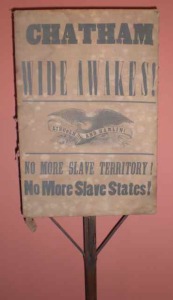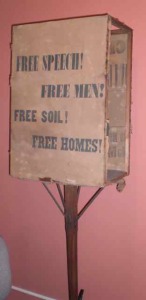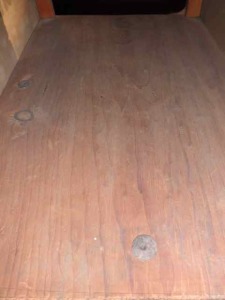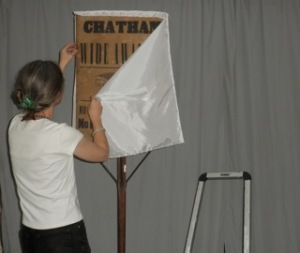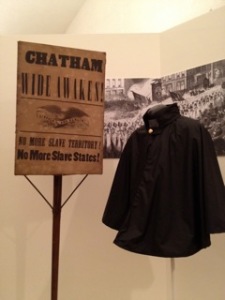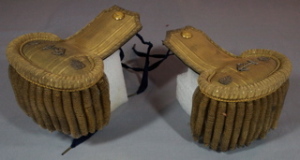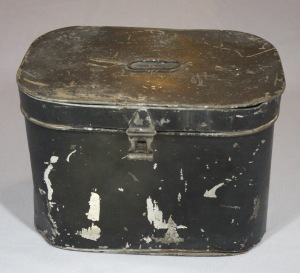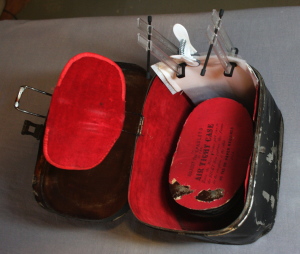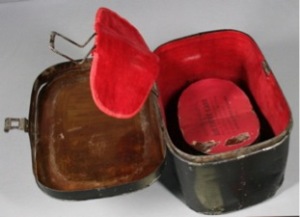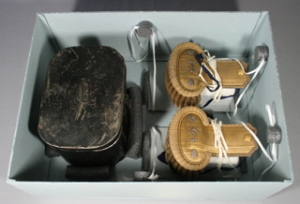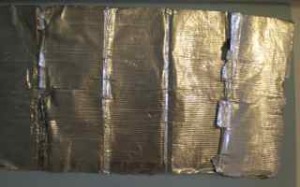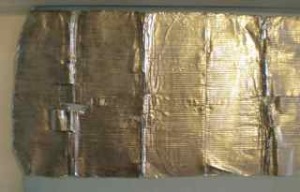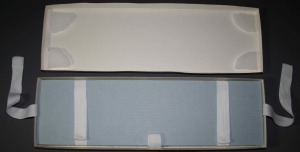A rare Campaign Transparency from 1860 is constructed of a wooden box frame and covered with printed cotton fabric on two sides. This artifact, is from the collections of the Columbia County Historical Society, was made for and used by the Chatham branch of the Wide Awakes at political rallies. It retains is original pole and metal braces. Follow the treatment on Facebook. This unique artifact will be on display in their up-coming Civil War exhibition, “Civil War Panorama, Columbia County 1860-1865”, which opened in July of 2012. More on the project can also be found in our blog Inside the Conservator’s Studio.
An oil lamp would have been secured in place on the base inside the fabric box. Ghost marks survive and nail holes are present at the center of the wooden base.
The two lost sides of the transparency are going to be compensated with new cotton fabric in a color that blends. Diane Schewchuk, curator came to assist with the selection of the fabric. A protective cover was constructed to be used for storage.
The Wide Awake transparency was on display at the Columbia County Historical Society in their Civil War exhibition, “A Civil War Panorama, Columbia County 1860-1865”.
Read more about Object Conservation at Spicer Art Conservation.

